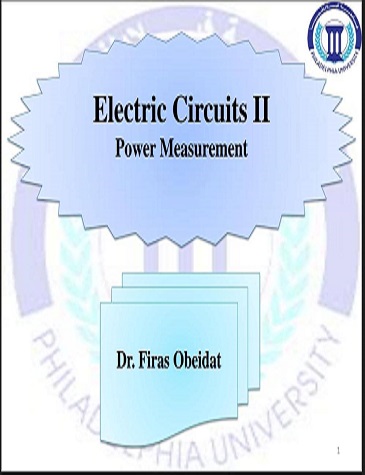
Electric Circuits II Power Measurement
The wattmeter consists essentially of two coils: the current coil and the voltage coil. A current coil with very low impedance (ideally zero) is connected in series with the load and responds to the load current. The voltage coil with very high impedance (ideally infinite) is connected in parallel with the load and responds to the load voltage. The current coil acts like a short circuit because of its low impedance; the voltage coil behaves like an open circuit because of its high impedance.
Where P1 ,P2 and P3 correspond to the readings of wattmeters W1 ,W2 and W3 respectively. The common or reference point o is selected arbitrarily. If the load is wye-connected, point o can be connected to the neutral point n. For a delta- connected load, point o can be connected to any point. If point o is connected to point b, for example, the voltage coil in wattmeter reads zero and indicating that wattmeter is not necessary. Thus, two wattmeters are sufficient to measure the total power.
The two-wattmeter method is the most commonly used method for three-phase power measurement. The two wattmeters must be properly connected to any two phases. The current coil of each wattmeter measures the line current, while the respective voltage coil is connected between the line and the third line and measures the line voltage.